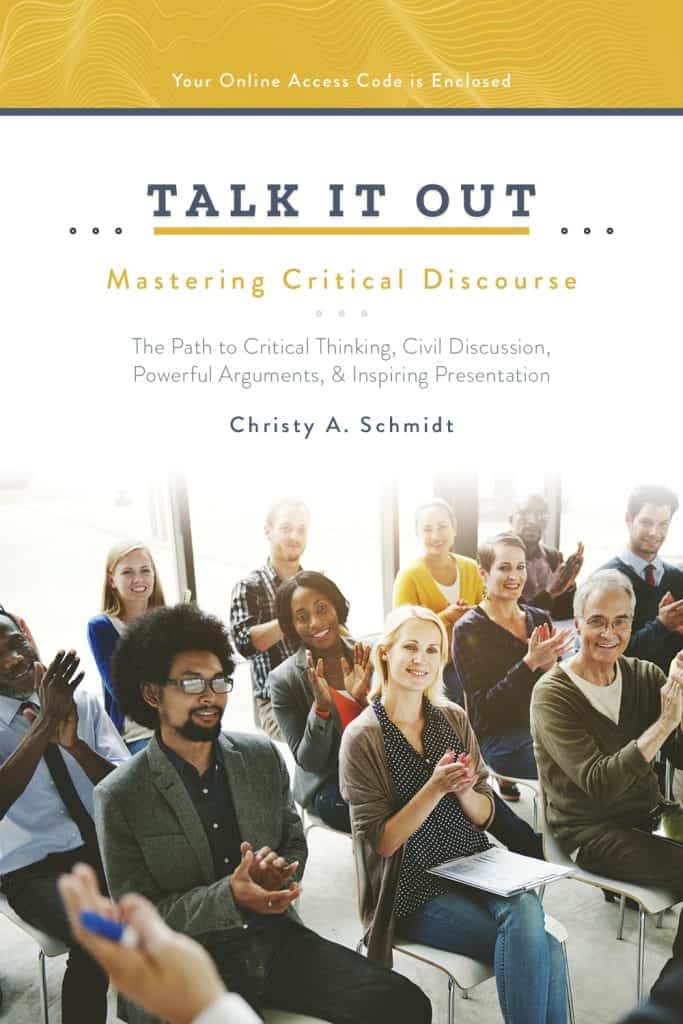Make Your Customers Cry, Shiver, or Laugh – Or Lose Them

Photo by Tengyart on Unsplash We’ve all seen the American Society for the Prevention of Cruelty to Animals (ASPCA) End Animal Cruelty commercial, starring Sarah McLachlan and her song Angel. The commercial, an example of an emotional appeal to trigger the cognitive bias of an identifiable victim, haunts us with images of shivering, starving, abandoned kittens and puppies. Most of us change the channel to avoid the pain. (I can’t watch it. I’ll cry for an hour!) But most of us donate to stop the pain. Because emotional appeals are a highly effective marketing approach. Emotional appeals (aka appeals to emotion) are a route to appeal to pathos. Aristotle insisted persuasion must use data from a credible source (ethos), a powerful argument (logos), and emotional appeal (pathos). We are humans, after all, and we have to care to be motivated to change our mind or behavior. But strict emotional appeals avoid facts and data and rely upon triggering an emotional response in the receiver. Emotional appeals force the receiver to use emotional or affect processing (as opposed to central or cognitive processing). For most consumers, marketers rely on emotional appeals as a more effective form of persuasion. Cognitive processing (logic) takes time, high interest, basic knowledge, and significant energy to think through the persuasive message. Most receivers do not have: (a) the cognitive ability to process complex messages; (b) the time to process (why time pressure is an effective sales approach); (c) the energy to process (I don’t care, I just want that car!); or (d) basic knowledge to process additional, complex data. Marketers can (and do) take advantage of this human foible using emotional – or motivational – appeals. To help you sell your widget, I’d like to share the science behind reaching your customers’ hearts. Motivational Appeals Emotional appeals include appeals to: happiness and joy, sadness and grief, humor, tradition, pride, connection, anger and outrage, compassion, adventure, popularity, sex and romance, lifestyle and status (including association), youth and appearance, and fear. Motivational appeals stimulate consumers’ internal incentives – their values, beliefs and attitudes – and their external incentives – through social proof, societal standards, and tribe expectations (others are doing it). The consumer does not buy or engage you for service because he or she thinks doing so makes sense. He or she does it because everyone else is. Because you share their emotional experience. And considering marketing is becoming increasingly emotional and connection-based, you can set aside the product is better logic for the product makes you feel approach. Consider if the ASPCA had no starving puppy video and only a guy in a suit who says, We need 1.5 million dollars to purchase food, to obtain medical care, and to re-home abandoned and abused animals. If you give us $30, you can save an animal. Yawn. The Sarah McLachlan masterpiece raised 30 million dollars in the first two years. Appeals In Action Joy: Coca-Cola received over 100,000 positive letters praising their “I’d Like to Buy the World a Coke.” Anger or Outrage: The Run Like A Girl commercial from Always redefined like-a-girl into a positive affirmation. Appearance: Dove’s Beauty Sketches helped women reconsider self-perception. Sadness or Grief: Chevy’s Maddie commercial subtly shows their vehicles last a lifetime. I’m sure your mind is listing commercial after commercial where you had an emotional reaction. There is nothing inherently unethical with marketing and advertising appealing to emotion. Ethical implications occur when the company behind the feelings offers nothing but those feelings – manipulating consumers or avoiding facts and figures. The trend is to do exactly that. Therefore, when using emotional appeals, use them ethically. Don’t manipulate your customer or client into choosing you or yours. Ethically use emotional appeals alongside logic, facts, and reasons for buying from you or using your service. Fear Appeals: An Example Fear appeals are a subset of emotional appeals. Fear appeals are only effective if the receiver knows (a) she has or is at risk of a serious problem to be solved; (b) believes she can solve the problem (is not hopeless or guilt-ridden); (c) is offered a viable solution (believes the solution will work); and (d) believes she can implement that solution. If a non-smoker sees a smoking cessation ad, she doesn’t feel at risk and ignores the appeal. If a smoker sees the ad, but thinks smoking is helpful, she will negate the ad as a non-problem. If the smoker who sees the ad feels like nothing works to help her quit, she will ignore the ad (and, in fact, the appeal will backfire). If she is engaged but thinks the solution won’t work, or won’t work for her, the appeal will fail. Fear appeals can trigger too much fear where the receiver feels hopeless or so fearful, it causes the “freeze” or “flee” (avoidance) responses. So, fear we must carefully craft a fear appeal to ensure a balance between triggering enough fear while still ensuring the receiver feels empowered. One of the most successful fear campaigns was the CDCs “tips from smokers” series–with people who were suffering from lung and throat cancer. How can you use a fear appeal in your own marketing? You get the idea! Now, it’s your turn. What emotional appeals match your product or service? How can you incorporate appeal to emotion in your marketing?
Drop the Facts and Figures: Touch Them!

(Image courtesy Yoann Boyer on Unsplash) Powerful marketing relies upon emotional appeals. Although, as an intelligent, cognitively complex person, I would like the world to rely on logic, it does not – and I can’t proffer logical arguments to increase sales for my content clients. These emotional industry tricks are the route to profitability: Read Robert Cialdini’s book to master these practices.
Persuade Them Powerfully

A recent study from the Journal of Marketing makes it clear: Feelings over Facts when persuading last-minute donors. The researchers found at the start of a campaign, logic motivates donors: I’ll donate if the organization proves its initiative is likely to succeed. But at the end of a campaign, to reach that big goal, emotion motivates donors. If I donate, am I part of something I value? What does this tell us? If you have a short-term campaign – days – use emotional appeals. If you have a long-term campaign – months, years – reason and logic win the day. Why did I already know this without spending years on some research project? Because the nature of persuasion is bifurcated. People are persuaded along two routes: a logical one and an emotional one. This Elaboration Likelihood Model (ELM) is long-appreciated by those of us who rely on persuasion. What the hell is that? you ask. Bear with me. This is vital information for all entrepreneurs. ELM states that in some cases, logic is persuasive. A logical – or cognitive – appeal triggers central processing. The listener evaluates or elaborates on the information. Elaboration takes time and effort. It takes context and, often, basic knowledge. And for a person to think about anything, he or she has to be invested – he or she has to care enough to take the time and energy to think. Elaboration also takes some cognitive ability. (Smart people choose central processing over emotional processing.) ELM also states in other cases, emotion is persuasive. An emotional – or affect – appeal triggers feelings. The listener does not consciously evaluate a thing. He or she reacts. Scientists call this peripheral processing. Aspects like attractiveness or likability are emotional appeals and have nothing to do with logic. They do not ask the listener to elaborate or logically evaluate the proposal. In my textbook, I have multiple chapters on this stuff! And, in my workshops, I share a personal story to illustrate: When my teen sons were buying a game console, I couldn’t care less which one we purchased because I rarely play video games on the console. I relied on the peripheral route: That one looks cool. I like the pretty lights. My sons, however, urged us to choose the system with the best ratings, most game choices, and most options. They used central processing, cognitively weighing the information because the decision was very important to them. Most persuasive marketing depends on affect appeals. Quick! Now or never! Isn’t this sexy? Isn’t this fun? Do it for the children! I’m handsome, trust me! Emotional appeals work when the person has low or passing interest, lack of knowledge, or lack of time. So, in those last-minute moments of any campaign, the listener does not have the time to use central processing. Lack of time equals defaulting to peripheral processing. Period. How can you take advantage of this human foible? Contact me to be your personal content consultant. I’m a professional persuader and will use my skill for your benefit!
Burying the Ashes of Hollywood

It’s Time to End Hollywood’s Undue Influence
Talk It Out: Mastering Critical Discourse

TALK IT OUT: MASTERING CRITICAL DISCOURSE introduces an innovative approach for mastering critical thinking and public presentation. Unlike mainstream public speaking texts, TALK IT OUT explores miscommunication distortions and biases and provides metacognition methods to overcome those barriers. Ideal for public speaking, forensics, and moot court instruction, the text ensures students confidently master civil and effective discourse. Key point summaries provide focus and periodic quizzes confirm theoretical comprehension. Chapter exercises range from complex individual and group projects to straightforward reflection questions. Contemporary incorporated videos, photos, and reference readings inspire exploration.